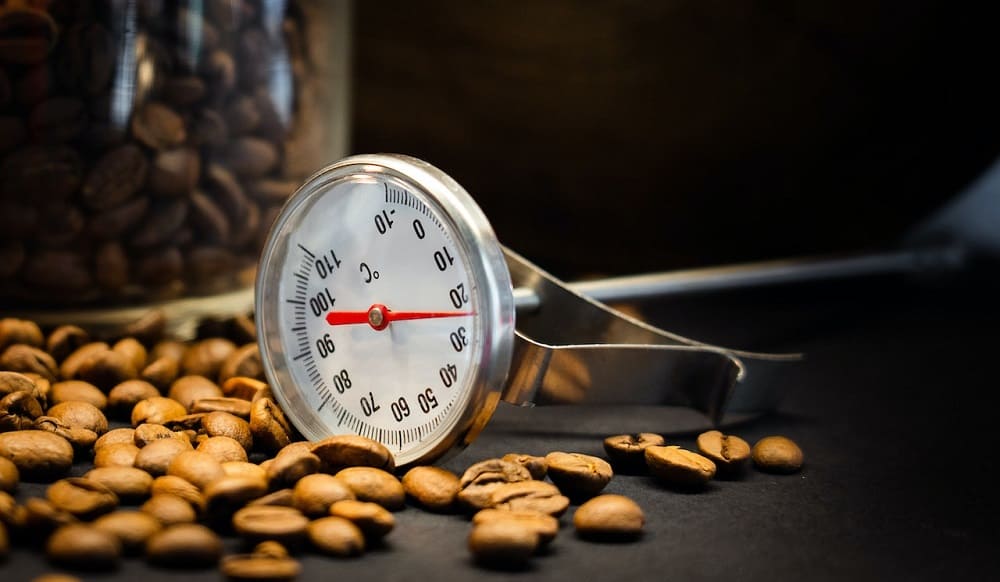Why You Need a Meat Thermometer

As someone who enjoys cooking, I’ve learned that precision is key when it comes to preparing meat. Whether you’re grilling, roasting, or smoking, knowing the internal temperature of your meat is crucial to ensure it’s safe to eat and cooked to your desired level of doneness. That’s why I always use a meat thermometer in my kitchen.
Not only does a meat thermometer help prevent foodborne illnesses by ensuring your meat is fully cooked, but it also helps you achieve the perfect level of doneness. No more guessing or cutting into your meat to check if it’s done – simply insert the thermometer and wait for the reading.
Plus, using a meat thermometer can help you avoid overcooking your meat, which can lead to dry, tough results. With a thermometer, you can cook your meat to the exact temperature you prefer, whether it’s rare, medium, or well done.
Benefits Of A Meat Thermometer
As someone who enjoys cooking, I have found that using a meat thermometer is essential in ensuring that my meals are cooked to perfection. Here are a few reasons why you need a meat thermometer in your kitchen:
- Food Safety: Using a meat thermometer is crucial in ensuring that the food you serve is safe to eat. By checking the internal temperature of meat, you can make sure that harmful bacteria such as Salmonella and E. coli have been destroyed. This is especially important when cooking poultry, pork, and ground meats.
- Consistent Results: A meat thermometer allows you to achieve consistent results every time you cook. By checking the internal temperature of meat, you can ensure that it is cooked to your desired level of doneness. This is especially important when cooking larger cuts of meat such as roasts or whole chickens.
- Avoid Overcooking: Overcooking meat can result in a dry and tough texture. By using a meat thermometer, you can avoid overcooking and ensure that your meat is moist and tender.
- Save Time and Money: Cooking meat to the correct temperature can save you time and money. By avoiding overcooking, you can reduce the amount of time it takes to cook your meal and avoid having to throw away meat that has been overcooked.
In conclusion, a meat thermometer is an essential tool for any home cook. By ensuring food safety, achieving consistent results, avoiding overcooking, and saving time and money, a meat thermometer can make a significant difference in the quality of your meals.
A thermometer for meat is also a great addition to an outdoor kitchen as you can read in this article.
Importance of Correct Meat Temperature
Food Safety
As someone who loves to cook, I know how important it is to ensure that the food I prepare is safe to eat. This is especially true when it comes to meat. Eating undercooked or raw meat can lead to serious foodborne illnesses such as salmonella and E. coli. By using a meat thermometer to check the internal temperature of your meat, you can ensure that it has been cooked to a safe temperature and is free from harmful bacteria.
The USDA recommends cooking beef, pork, lamb, and veal steaks, chops, and roasts to a minimum internal temperature of 145°F (63°C) and allowing it to rest for at least 3 minutes before carving or consuming. Ground meats, such as beef and pork, should be cooked to a minimum internal temperature of 160°F (71°C). Poultry, including chicken and turkey, should be cooked to a minimum internal temperature of 165°F (74°C) to ensure that it is safe to eat.
Flavor
Not only is using a meat thermometer important for food safety, but it can also help you achieve the perfect level of doneness for your meat. Cooking meat to the correct temperature can help ensure that it is juicy and flavorful, rather than dry and tough.
For example, a medium-rare steak should be cooked to an internal temperature of 135°F (57°C), while a medium steak should be cooked to 145°F (63°C). By using a meat thermometer to check the internal temperature of your steak, you can ensure that it is cooked to your desired level of doneness.
Texture
In addition to affecting the flavor of your meat, cooking it to the correct temperature can also impact its texture. Overcooked meat can become tough and dry, while undercooked meat can be chewy and unpleasant to eat.
By using a meat thermometer, you can ensure that your meat is cooked to the correct temperature, resulting in a tender and juicy texture. This is especially important for larger cuts of meat, such as roasts, which can be difficult to cook evenly without a thermometer.
Overall, using a meat thermometer is an essential tool for any home cook. By ensuring that your meat is cooked to a safe temperature, you can protect yourself and your family from foodborne illness. Additionally, by cooking your meat to the correct temperature, you can achieve the perfect level of doneness and texture, resulting in a delicious and enjoyable meal.
Related Post: https://regionalfoodsolutions.com/benefits-of-using-top-quality-meal-delivery-services/
How to Use a Meat Thermometer
Proper Thermometer Placement
When using a meat thermometer, it is important to place it in the correct spot to get an accurate reading. For thick cuts of meat, insert the thermometer probe into the thickest part of the meat, making sure not to touch any bone or fat. For thinner cuts, such as chicken breasts or fish fillets, insert the probe horizontally from the side to the center of the meat.
Reading the Temperature
Once the thermometer is properly placed, wait for the temperature reading to stabilize. Most digital thermometers will beep once the temperature is steady. If you are using an analog thermometer, look for the temperature to stop rising.
The temperature you are looking for will depend on the type of meat you are cooking and your desired level of doneness. Refer to a meat temperature chart to determine the correct temperature for your specific meat. For example, a medium-rare steak should read 130-135°F, while a well-done steak should read 160°F or higher.
It is important to clean your thermometer after each use to prevent cross-contamination. Simply wash the probe with soap and warm water, and sanitize it with rubbing alcohol or a sanitizing solution.
Remember, using a meat thermometer is the most reliable way to ensure that your meat is cooked to a safe temperature and is not overcooked. By following these simple steps, you can use your meat thermometer with confidence and achieve perfect results every time.
Choosing the Right Meat Thermometer
When it comes to choosing the right meat thermometer, there are a few factors to consider. Here are some key things to keep in mind:
Type of Thermometer
There are several types of meat thermometers available, each with its own pros and cons. Some of the most common types include:
- Instant-read thermometers: These are the most popular type of meat thermometers. They are inserted into the meat and provide a reading within seconds. They are great for checking the temperature of thin cuts of meat but are not ideal for thicker cuts.
- Probe thermometers: These have a long, thin probe that is inserted into the meat. They are ideal for thicker cuts of meat, as they allow you to check the temperature at the center of the meat.
- Wireless thermometers: These come with a probe that is inserted into the meat, and a base unit that displays the temperature. They are great for monitoring the temperature of meat that is cooking in the oven or on the grill.
Accuracy
Accuracy is key when it comes to meat thermometers. Look for a thermometer that has been tested and calibrated for accuracy. Some thermometers also come with a certification from the National Institute of Standards and Technology (NIST), which can give you added confidence in the accuracy of your readings.
Temperature Range
Make sure the thermometer you choose has a temperature range that is appropriate for the types of meat you will be cooking. For example, if you plan to cook a lot of beef, you’ll want a thermometer that can measure temperatures up to 200°F or higher.
Ease of Use
Finally, consider how easy the thermometer is to use. Look for a thermometer with a clear display that is easy to read, and make sure the buttons and controls are intuitive and easy to use.
By keeping these factors in mind, you can choose a meat thermometer that is accurate, reliable, and easy to use.
Meat Thermometers – My Opinion
In conclusion, having a meat thermometer is an essential tool for any home cook or professional chef. Not only does it ensure that your meat is cooked to the right temperature, but it also helps prevent undercooked or overcooked meat, which can be dangerous to consume.
Using a meat thermometer takes the guesswork out of cooking meat, allowing you to achieve perfect results every time. It also helps you avoid ruining an expensive cut of meat, which can be frustrating and costly.
Investing in a good quality meat thermometer is a small price to pay for the peace of mind it provides. Whether you’re grilling, roasting, or smoking meat, a meat thermometer is a must-have tool in your kitchen.
So, if you’re serious about cooking and want to take your skills to the next level, I highly recommend investing in a meat thermometer. You won’t regret it!
Mark Turner
Mark Turner is a food lover who likes to travel the world and find food that he never tasted before. With all the tasting he did all over he can write some amazing content related to food and cooking. You can read more about Mark Turner here.





